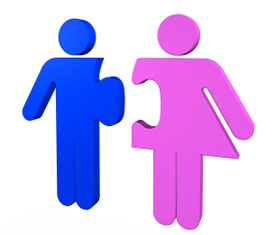
Clients’ pasts are alive in their relationship with their therapists, and that directly affects how motivated they are to stay in therapy. Therapists who can recognize and adapt to the different kinds of attachment styles–and therapists who can recognize their own attachment styles–will have a better chance of preventing premature terminations, establishing stronger relationships with their clients, and coming to better outcomes, no matter whether they practice CBT, psychodynamic, client-centered or any other kind of therapy. They will also be more adept at and proactive in avoiding ruptures to the alliance and better able to quickly repair such ruptures. Research shows that therapists who can recognize and repair ruptured alliances are more likely to have successful outcomes.
As the old saying goes, “Love makes the world go ’round”. We might easily change the word “love” to “attachment”. Touch, the first language of organizing attachment, is experienced by us as embryos. There follows a complex set of interactions by eye contact, sound, quality of handling and of seeking and receiving care for our needs, in different ways and at different times. We in the sciences like to count things, but the exponential possibilities that come together to form attachment styles could possibly be uncountable. Admirably, however, social scientists have counted and organized attachment data in very useful theories and valuable interventions. It has long been known that oneconsistent factor, if not the most consistent, in therapeutic outcome has to do with the quality of the relationship between the client and therapist. In psychotherapy, at least two come together. One will be counted as a client, the other as a therapist. Each has a unique attachment style. The exponential possibilities of how these attachment styles may effect each other is amazing. Open the door to the offerings of our Attachment Online CE Courses and you’re likely to find value there. You might even find more of yourself while learning more about the art and science of psychotherapy.
What each client brings to therapy, in terms of their expectations about the therapist and therapy and their hopes and fears about the therapy relationship, exerts a more powerful effect on therapy outcome than any specific therapy modality. And each therapist’s attachment style, no matter how “neutral” or objective they believe they are, has a significant impact upon each individual client. The therapist who is aware of the client’s attachment style and of their own can more deliberately affect the course of therapy.
See our course on the increasingly popular topic of attachment:
Clients’ Attachment Styles and Therapy Outcomes (5 CE Credit Hours)
- People with secure attachment styles prefer a close rather than professional therapy relationship.
- People with high attachment anxiety feel more threatened by the prospect of a close therapy relationship and prefer a “professional” one.
- Clients who view themselves as worthy of love and support are more likely to form emotional bonds and negotiate meaningful goals with therapists.
- Therapists with anxious attachment styles are less able to respond helpfully to ruptures in the therapeutic alliance, and therapists who know their own attachment style can reduce client dropouts.
- During an alliance rupture, anxious therapists’ fear of abandonment may be intensified, which may diminish their ability to be empathic with their clients.
- Therapists who know a client’s attachment style can better motivate the client to change.
- There are four main attachment styles–secure, fearful, dismissing and preoccupied.
- People with insecure attachment styles prefer therapists who ask questions rather than just listen.
- Adult attachment styles encompass two dimensions: the person’s image of the self as either worthy or not worthy of love and support from others, and the person’s image of others as either trustworthy and available or unreliable and rejecting. This profoundly affects the course of therapy.